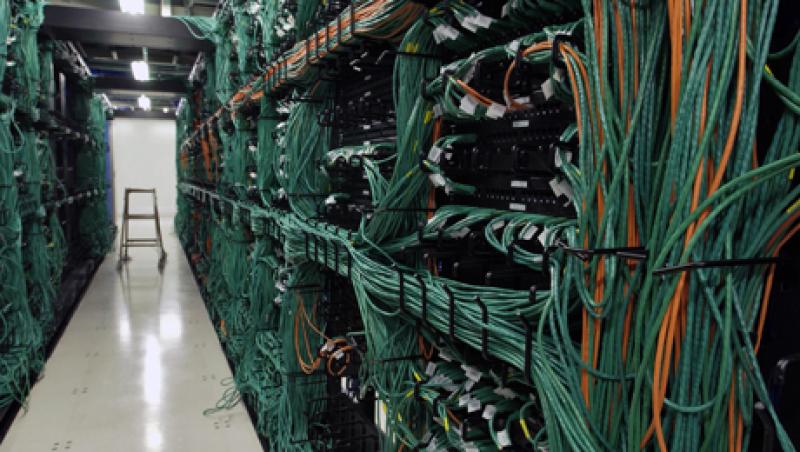High frequency trading is under fire. Over the past week, politicians and regulators in Europe and the U.S. have made plain their intentions to analyze the impact of ultra-fast trade execution on equity market structure — and slow it down, if necessary, in a bid to boost investors’ confidence. But regulatory efforts to strengthen market resilience by focusing on speed alone risk overlooking the fundamental changes that electronic trading has wrought on equity market-making and liquidity provision, both of which could be undermined by simply squeezing the high frequency trading community with new rules.
The diversity of the proposed regulatory moves reflects the degree to which high frequency trading is seen as a threat to market integrity in different jurisdictions. In the U.S., where the Securities and Exchange Commission convened a roundtable on market technology on Tuesday, October 2, high frequency trading has become so deeply embedded in equity market structure that regulators are less inclined to treat it as a problem — and more inclined to look at its role in the broader context of the market’s technological infrastructure. But even the SEC has acknowledged that it needs more insight into U.S. equity-trading patterns, and recently announced plans to launch an Office of Analytics and Research, housed within the Trading and Markets Division, to watch trade-data feeds from exchanges and examine order flows and high-speed cancellations.
Outside the U.S. high frequency trading has become a lightning rod for political anxiety about dramatic changes to equity-market structure — particularly in Europe, where markets have been transformed by the spread of electronic trading. The catalyst for that change, a piece of groundbreaking legislation known as the Markets in Financial Instruments Directive, or MiFID, was implemented in 2007 with the goal of harmonizing legislation for financial instruments across the 27 member states and boosting competition among exchanges. Since then, equity trading has fragmented across a range of new, alternative exchange platforms. Trading costs have come down and execution speeds have improved. Those conditions have benefited all market participants — and, perhaps inevitably, attracted more activity from high frequency trading firms, which accounted for 38 percent of all equity value traded in Europe in 2011, up from just 5 percent in 2006, according to U.S. market research and strategic advisory firm TABB Group.
In the wake of that transformation, European politicians have become increasingly concerned about the possibility that their equity markets could experience a U.S.-style Flash Crash, which hewed nearly 1,000 points off the Dow Jones Industrial Average in minutes on May 6, 2010, before prices rebounded. Although high frequency trading firms were not implicated in the crash, the unprecedented speed at which the markets plunged unnerved European market regulators and participants alike. European politicians and regulators have also looked askance at recent technology problems experienced by individual U.S. exchanges and broker-dealers, including BATS Global Markets’ failed initial public offering on its own exchange in March, Nasdaq’s botched IPO of Facebook in May and broker-dealer Knight Capital Group’s computer-trading fiasco in August, which ultimately cost the firm $440 million. Although none of those issues were attributable to high frequency trading, they all had attracted headlines and, arguably, undermined confidence in the markets.
In response, European politicians are now seeking to redress perceived market structure weaknesses through the legislative framework of MiFID II, the successor to the original 2007 law. The proposed legislation would curb high frequency trading activity by eliminating the maker-taker pricing system (in which exchanges offer rebate fees to customers that “make” liquidity by supplying bid-ask quotes on the trading book and charge a low fee to clients who “take” liquidity by hitting those bids and offers), banning sponsored access (which allows firms to trade using an exchange member’s infrastructure) and slowing marketwide trade execution. Just last week, for example, the European Parliament’s Economic and Monetary Affairs Committee made headlines by recommending the addition of language that would require a 500-millisecond minimum resting time on all equity trades prior to execution. Although the MiFID II requirements are not yet final — the exact language of the legislation will have to be reconciled by representatives of the European Parliament, Council and Commission — the regulatory momentum is clear.
For market structure experts, the combination of potential changes could result in a radical shift in the way that European equity markets operate. The prospect of imposing a mandatory resting time for all equity trades, for example, could have unforeseen ramifications.
“If everyone has to abide by the 500 millisecond rule, it will slow the markets down, but only temporarily,” says Rebecca Healey, a London-based senior analyst at TABB Group. “It’s like putting a speed bump in the road — as soon as everyone clears it, they’ll be driving full speed ahead to get to the last stretch. In practical terms, it means that the people who’ve got the quickest route to the markets, after those 500 milliseconds have elapsed, will benefit the most.”
The prospect of even having to implement such a resting time gives Mark Hemsley, CEO of London-based BATS Chi-X Europe, cause for concern. Hemsley, who is also a member of the European Securities and Markets Authority’s Secondary Markets Standing Committee, which provides advice on the impact of market structure changes, is worried that the imposition of a resting time will also adversely affect bid-ask spreads. If investors are required to risk more capital for a longer duration — and are unable to make changes to their orders as they wish, whenever they want — they may not be willing to risk as much. “If this comes into effect, the first thing we’ll see is wider spreads. Then we’ll see smaller amounts of capital put at risk, or advertised in positions,” he says. “So effectively the equity markets would suffer from lower liquidity — and that liquidity would be more expensive.”
Other observers contend that higher bid-ask spreads would help stabilize the market, and that what high frequency traders provide is not true liquidity. “For most of the 20th century we had substantial limits to trading, in the form of stock transfer taxes and fixed brokers’ commissions,” observes Lynn Stout, a professor of business and corporate law at Cornell University. “Yet equity markets were plenty liquid.”
In any case, the news about the new MiFID II language coincided with an announcement on September 26 by the German government that its cabinet had approved draft legislation squarely aimed at regulating high frequency trading, too. Germany’s proposal included requirements that all high frequency traders be licensed, all financial products traded by automated trading programs be labeled and orders placed without a corresponding trade be limited (to reduce the number of fleeting, insubstantial orders placed by high frequency trading firms that can clog the markets). Those proposals, which — even if they passed both houses of Parliament — would be superseded by MiFID II, gave a clear indication of just how polarizing the topic of high frequency trading has become in the political realm. With general elections looming in 2013, Germany’s Social Democrats, who have rallied behind former finance minister Peer Steinbrück, have made it clear that they will challenge Angela Merkel’s Christian Democrat-led coalition government on financial market issues; the new legislation may be one way to combat the accusation.
“The opposition has already made it clear that financial regulation is one of the topics that will be a top priority for the coming campaign,” says Stefan Mai, head of market policy for Deutsche Börse Group. “As the current government places great importance on financial regulation, I expect it will pass the law — as well as for political reasons — even if it has to change the law’s implementation almost immediately once MiFID II comes into force in Europe. Generally speaking, though, I prefer a harmonized European approach to limit the risks and maintain a level playing field for the German capital market.”
Although European Trilogue negotiations will take weeks, if not months — and there is no guarantee that the 500 millisecond resting time will remain part of the final legislation — TABB Group’s Healey is concerned that importance of market regulation may get lost in the ongoing political challenges arising from the euro zone crisis and that “ridiculous and arbitrary” rules may be put into place as a result. Members of the European Parliament (MEPs) now have to contend with larger, groundbreaking regulatory challenges, including the push to create a pan-European banking supervisor, and complex market-infrastructure issues may not remain a top priority for them for long, she says.
“The danger is that these proposals simply won’t concern a lot of MEPs, given the additional regulation going through currently, such as the European Banking Union,” she says, “and that really is a worry, because their lack of engagement will dictate European equity market structure, going forward.”






